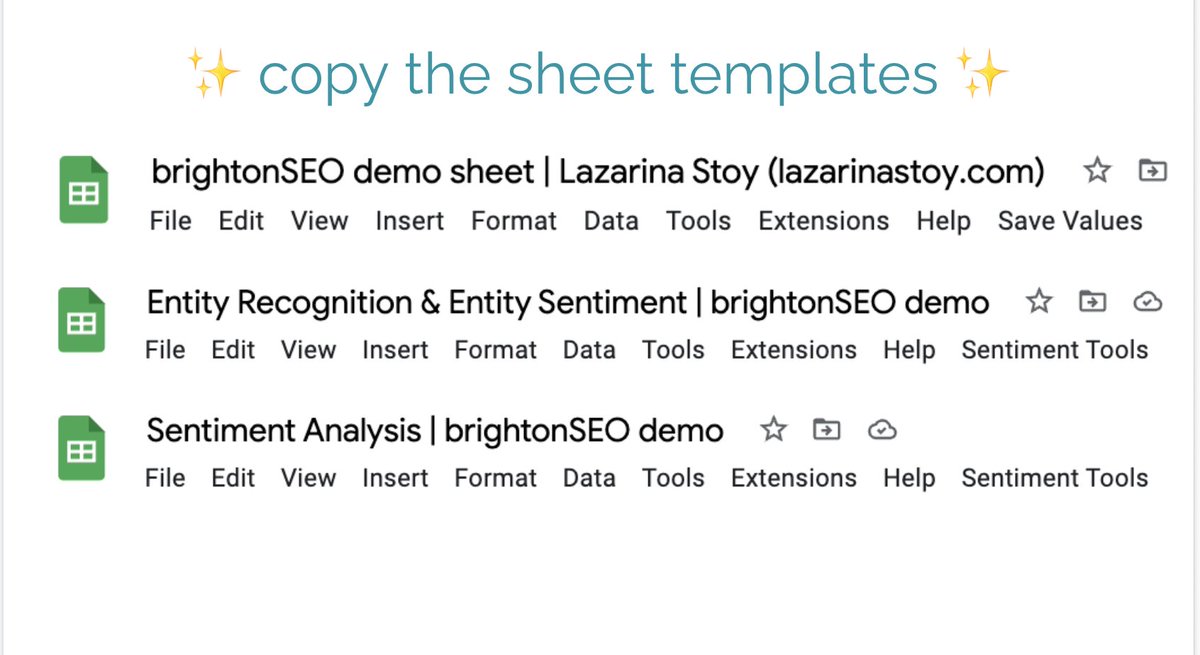
THANK YOU FOR COMING TO MY TALK ✨
Deck, dashboard I demoed, and the sheets w/ AppScript used to create it ⬇️Tutorials soon (subscribe✅).
Now, it's on to you for the last 20% of the effort - looking forward to seeing how you implement everything learned. 🔥
#BrightonSEO
Deck, dashboard I demoed, and the sheets w/ AppScript used to create it ⬇️Tutorials soon (subscribe✅).
Now, it's on to you for the last 20% of the effort - looking forward to seeing how you implement everything learned. 🔥
#BrightonSEO

How to Incorporate ML in your SERP Analysis (Deck)
slideshare.net/LazarinaStoyan…
slideshare.net/LazarinaStoyan…
Get the Dashboard in Google Data Studio:
datastudio.google.com/reporting/ef1b…
🔥Tutorials on how to do everything, for those who need them will be published on YouTube very, very soon. Subscribe to know when.
youtube.com/channel/UCkhA-… 🔥
datastudio.google.com/reporting/ef1b…
🔥Tutorials on how to do everything, for those who need them will be published on YouTube very, very soon. Subscribe to know when.
youtube.com/channel/UCkhA-… 🔥

Access the deck to get the links to all of these sheet templates, and make a copy to start using the @dataforseo, @OpenAI GPT-3, and @googlecloud NLP API code straight away for entity analysis, sentiment analysis & more
Remember to modify the scripts to include your own API key
Remember to modify the scripts to include your own API key

There are so many use cases for these scripts, it would be crazy not to use them.
Here are just a few... 🤫

Here are just a few... 🤫


@brightonseo as per usual is an absolutely incredible experience, thank you to everyone, who made it special, and massive, massive thanks to the #BrightonSEO for being the most amazing human beings ever.
• • •
Missing some Tweet in this thread? You can try to
force a refresh








